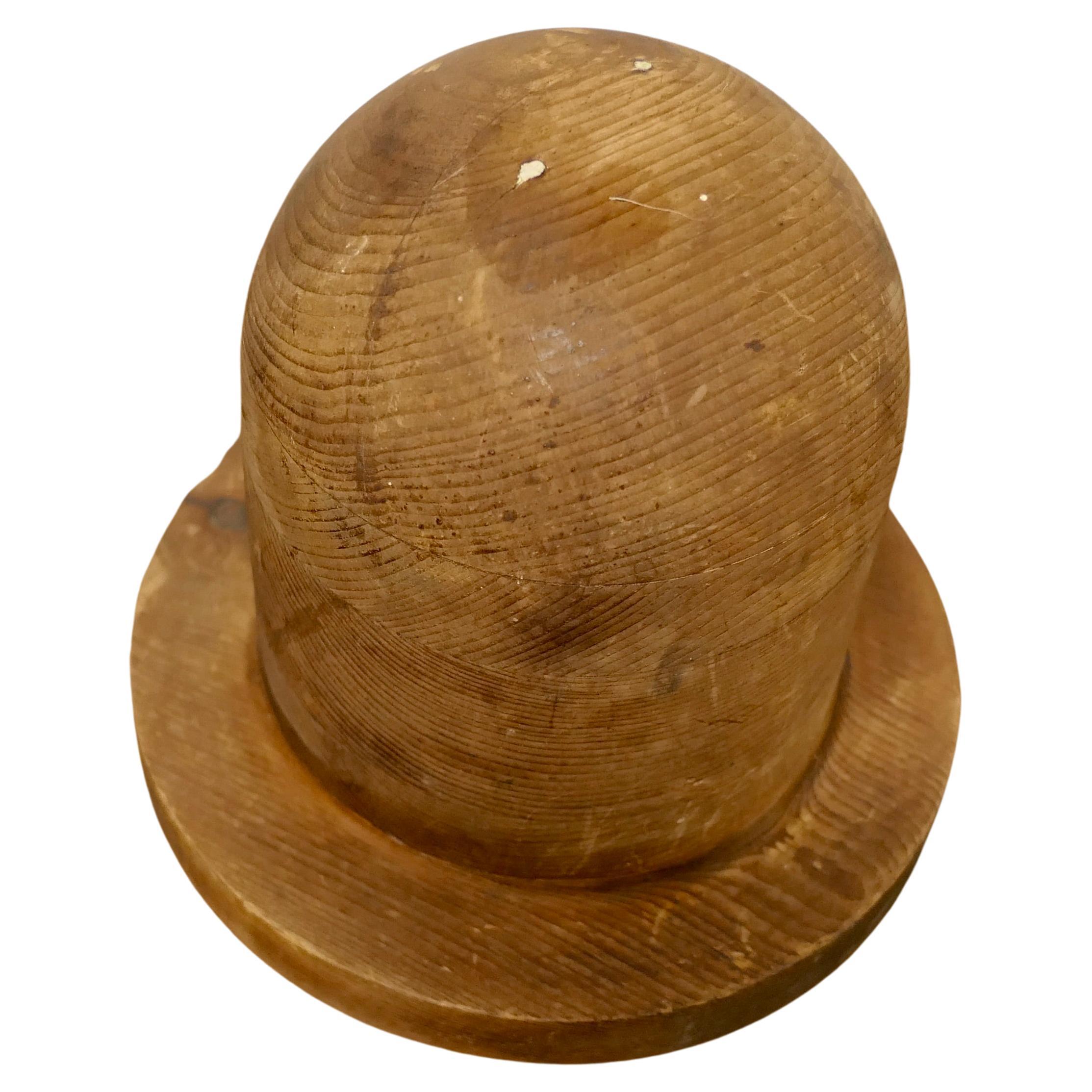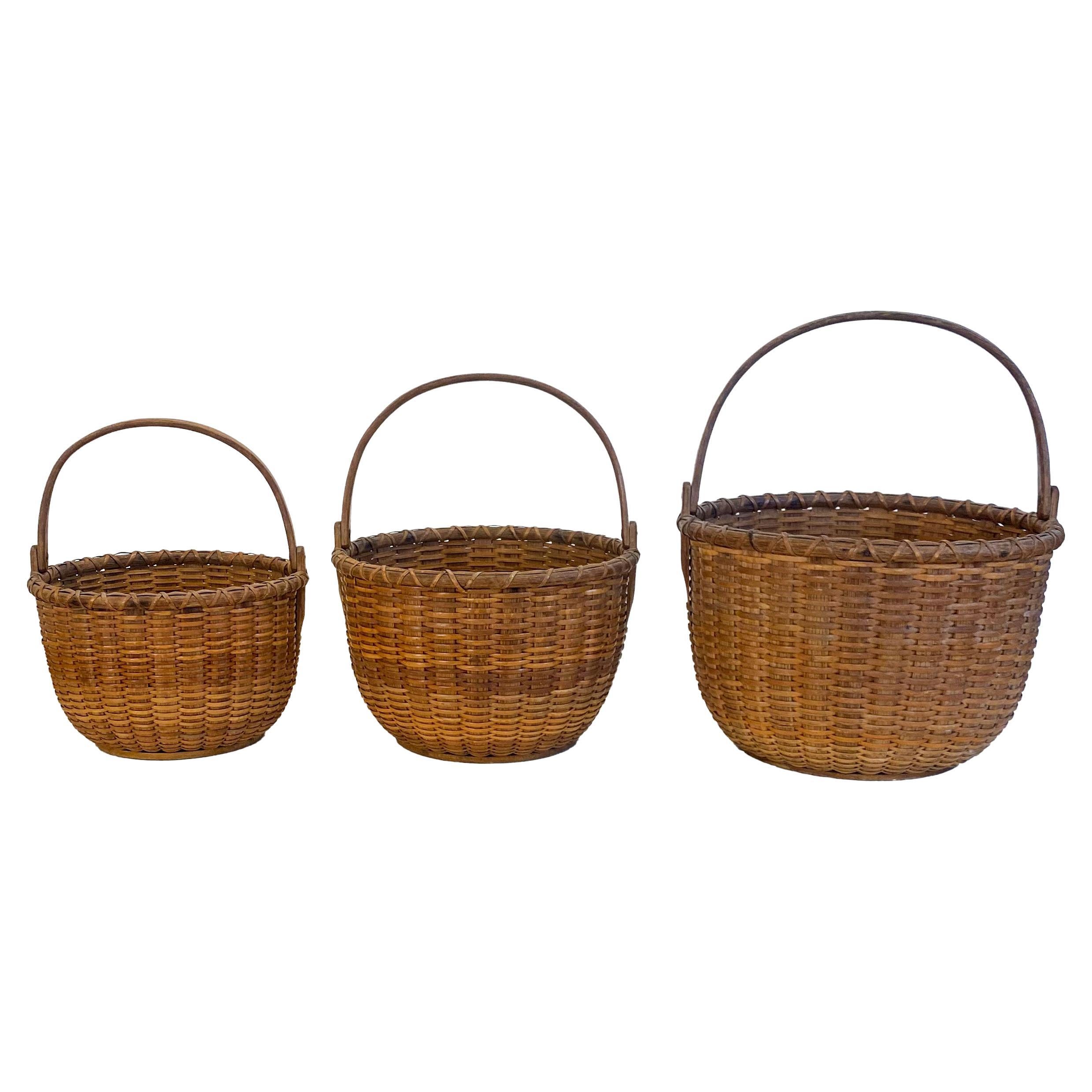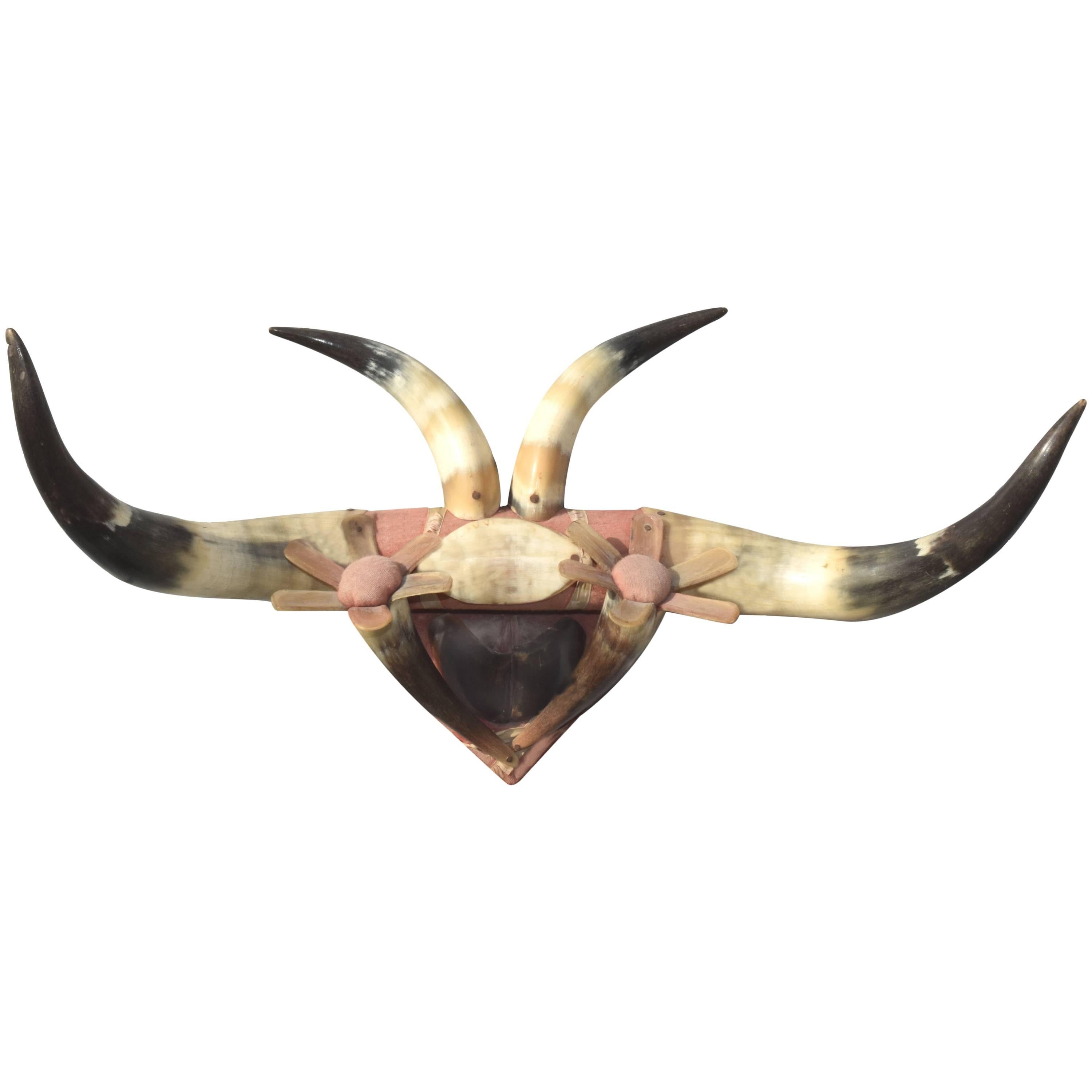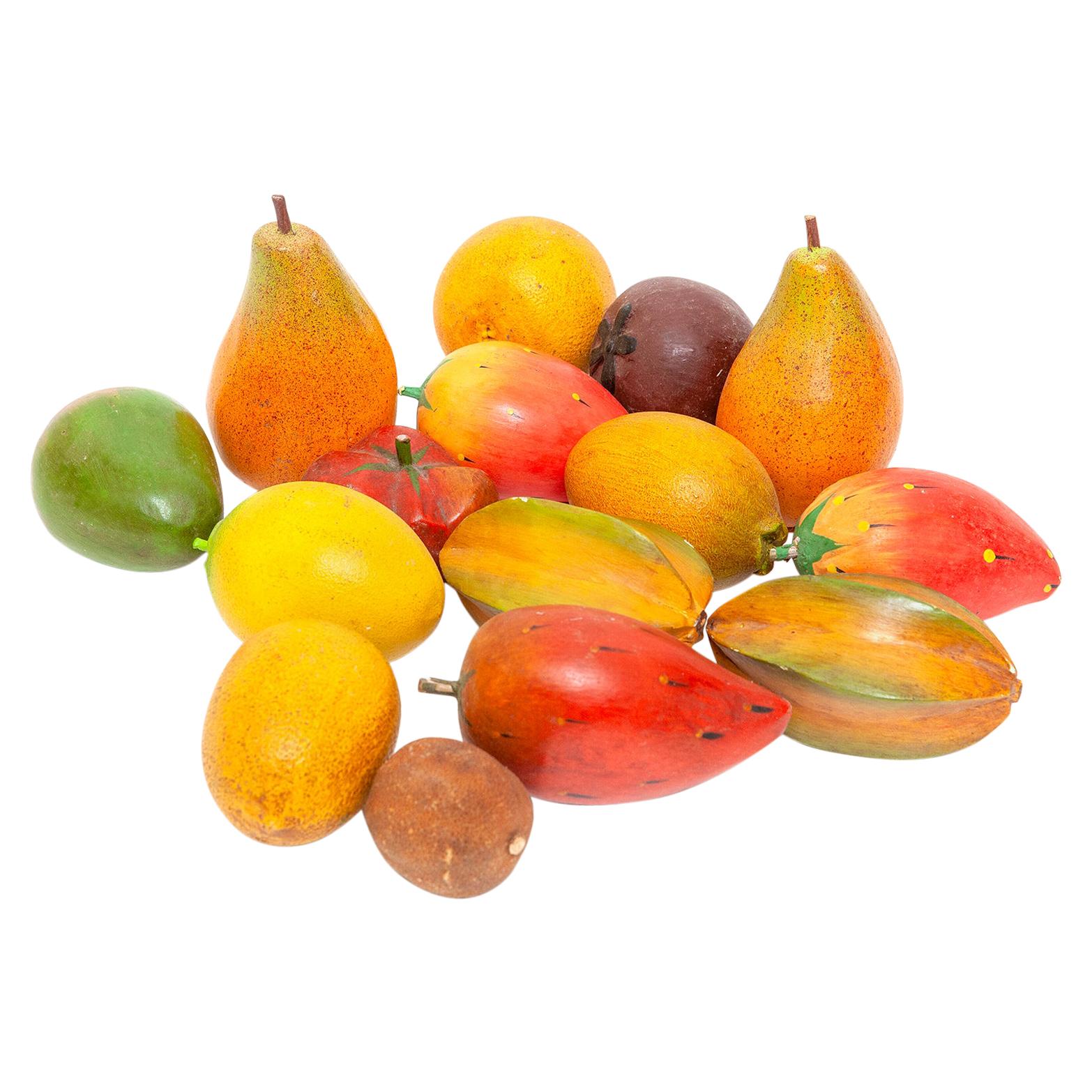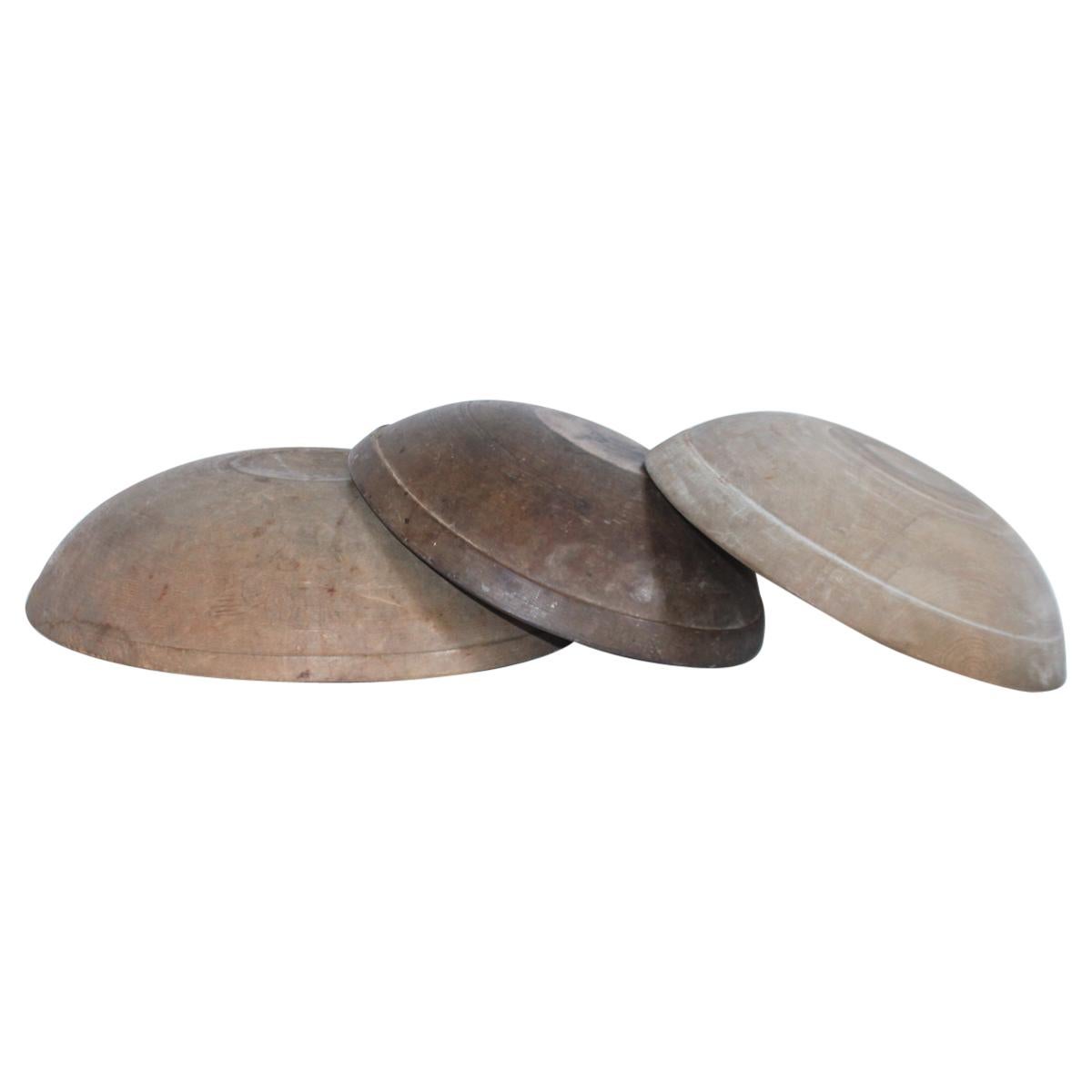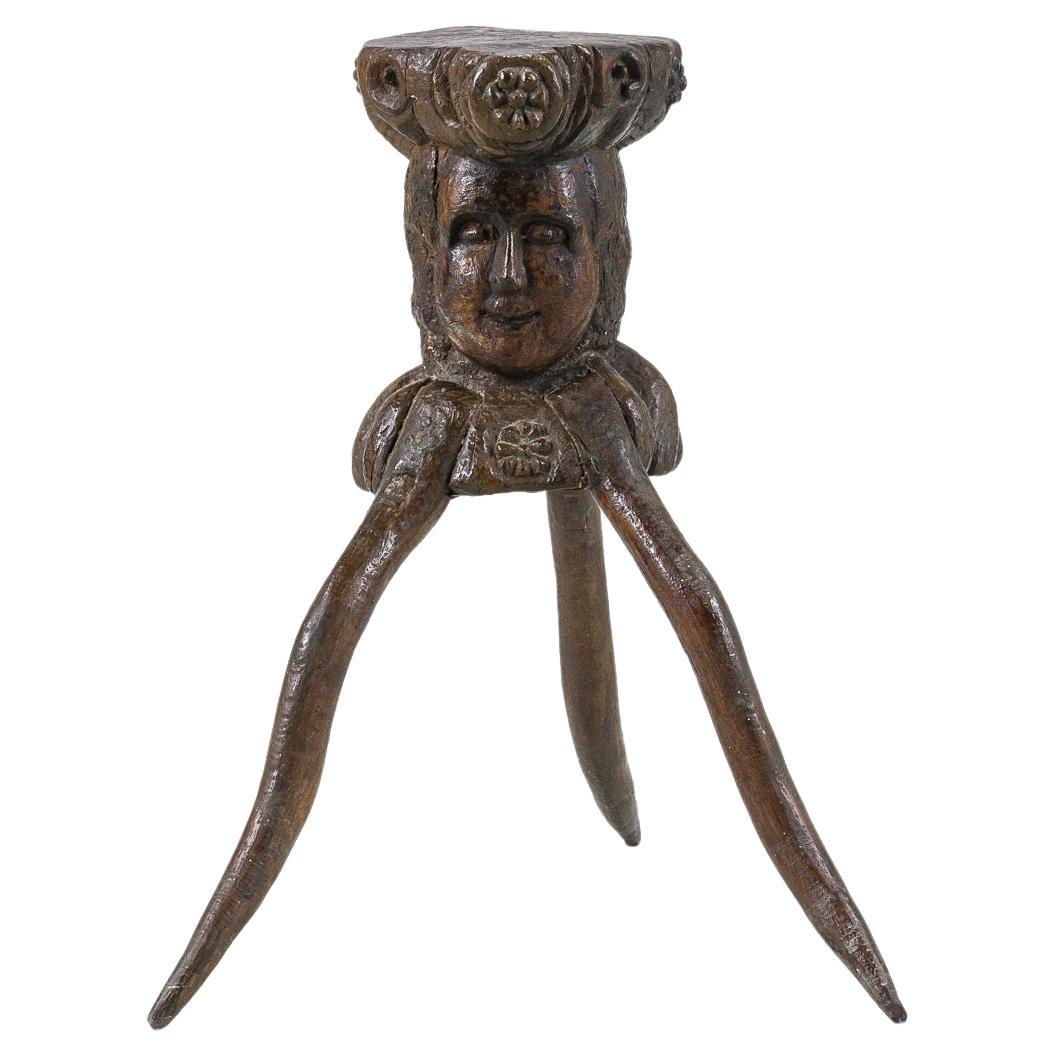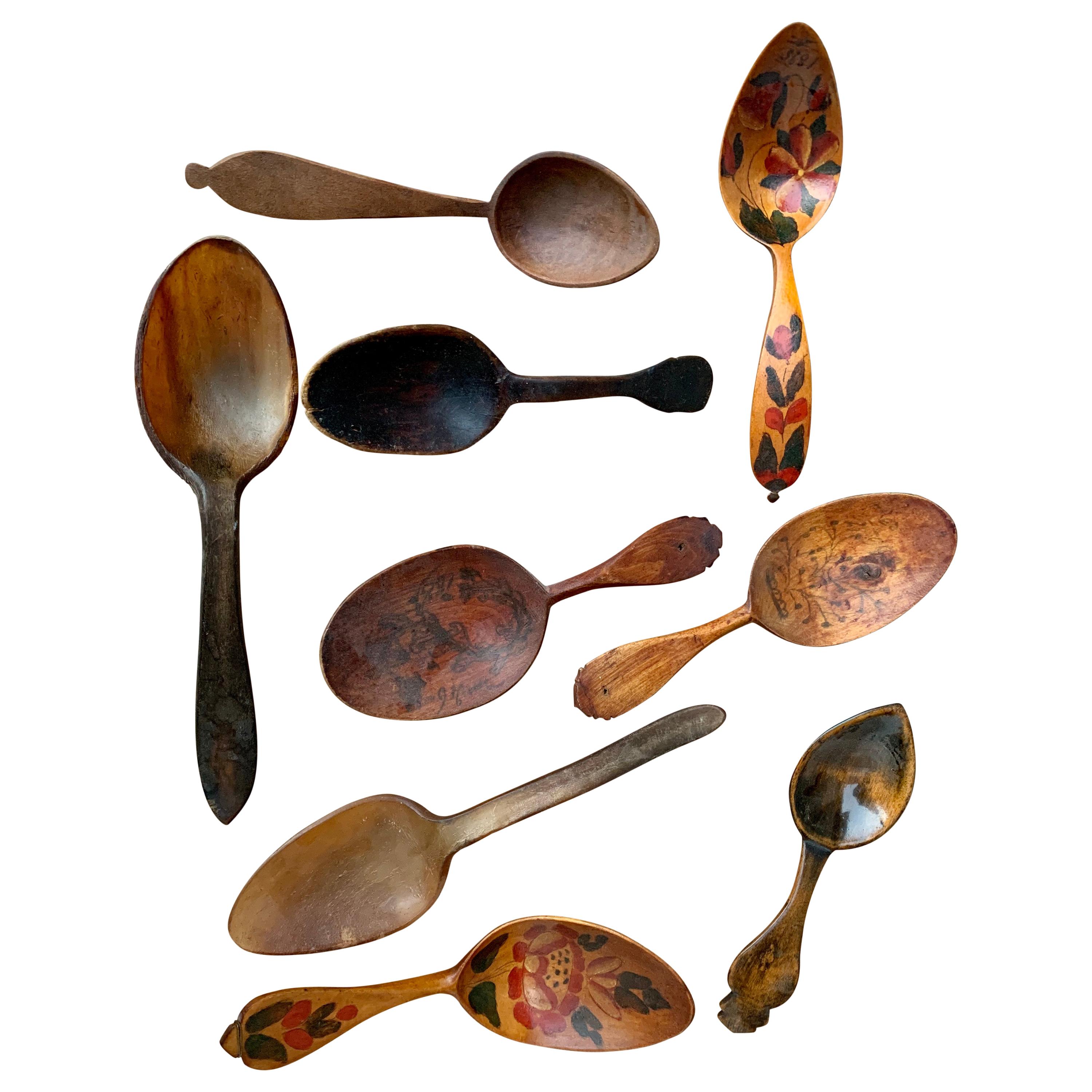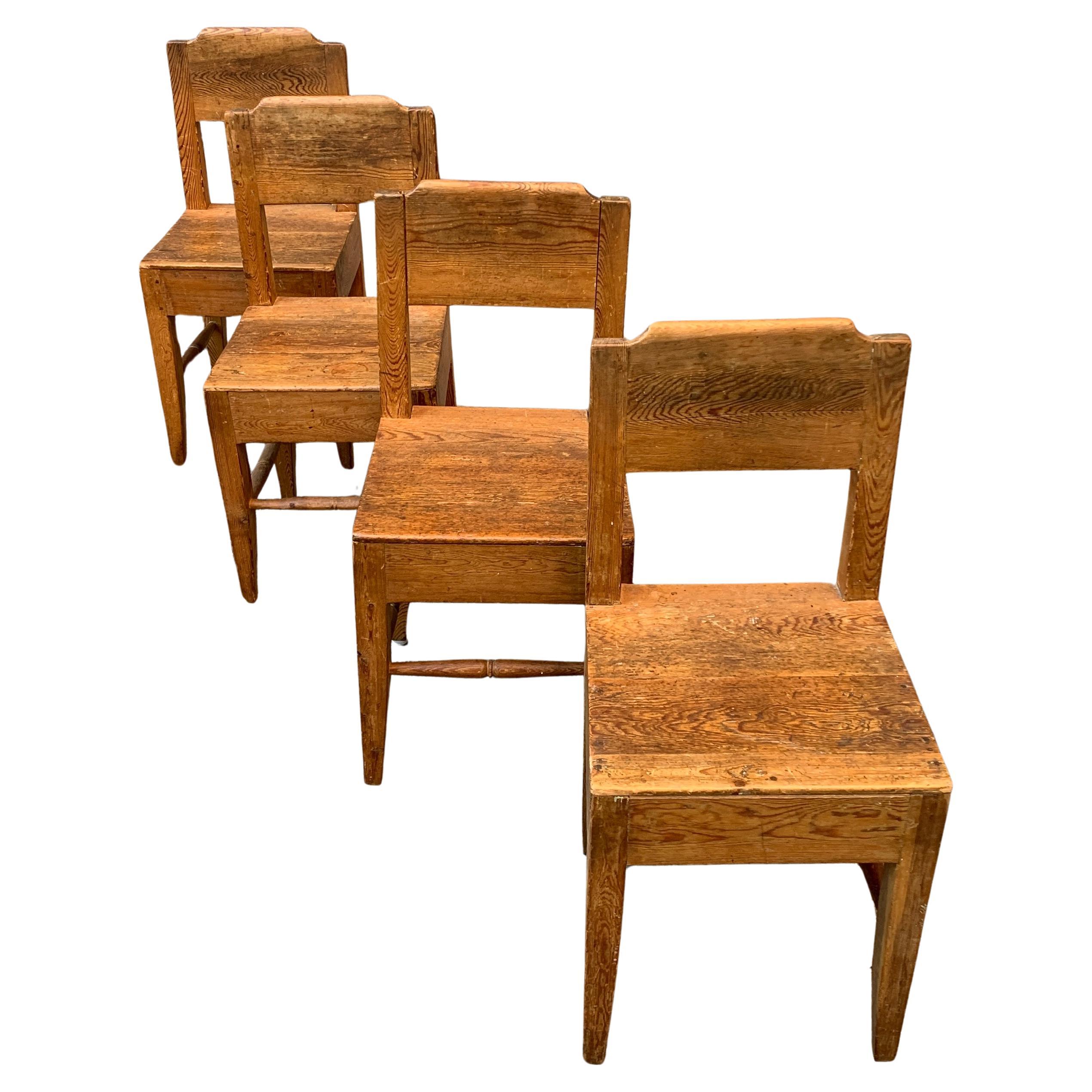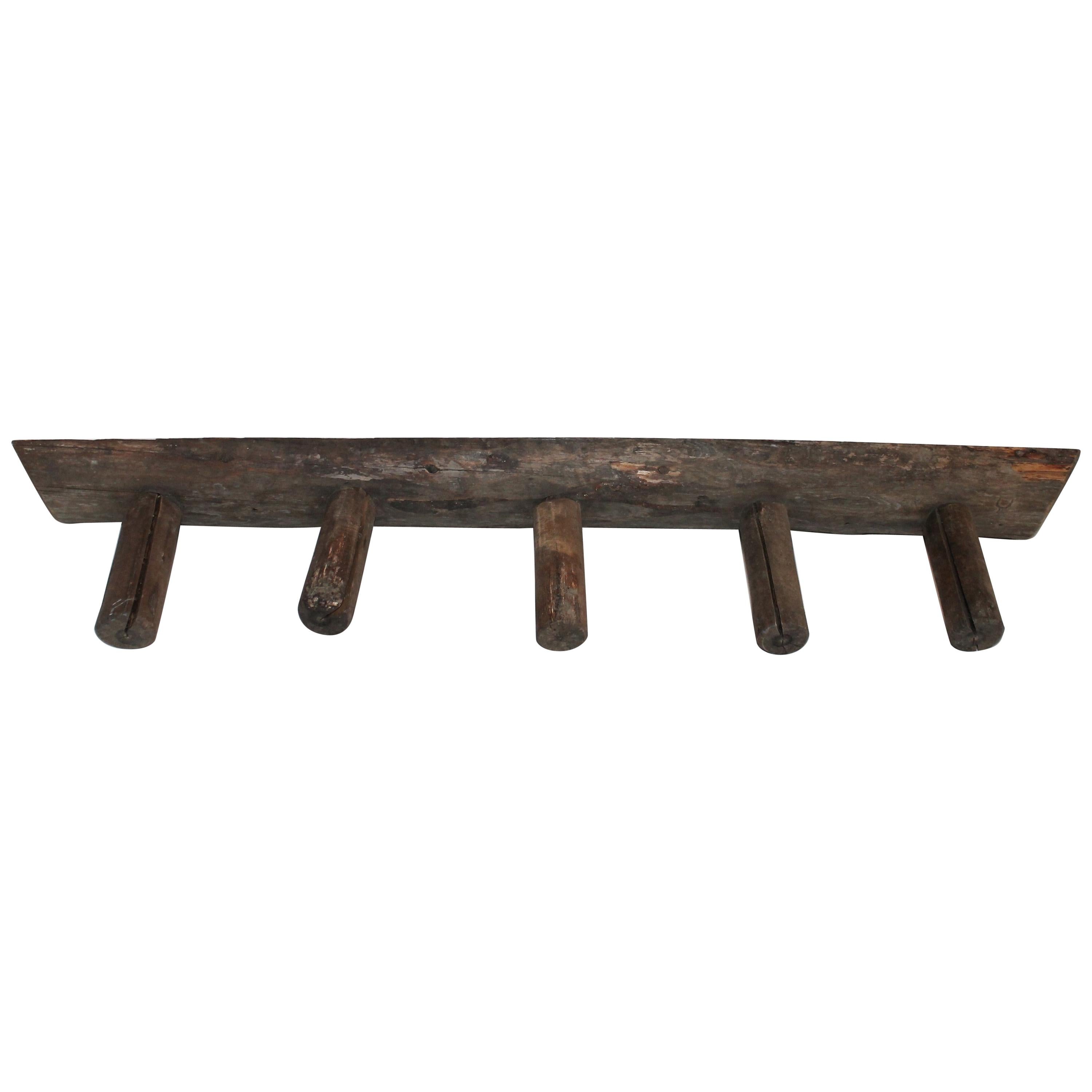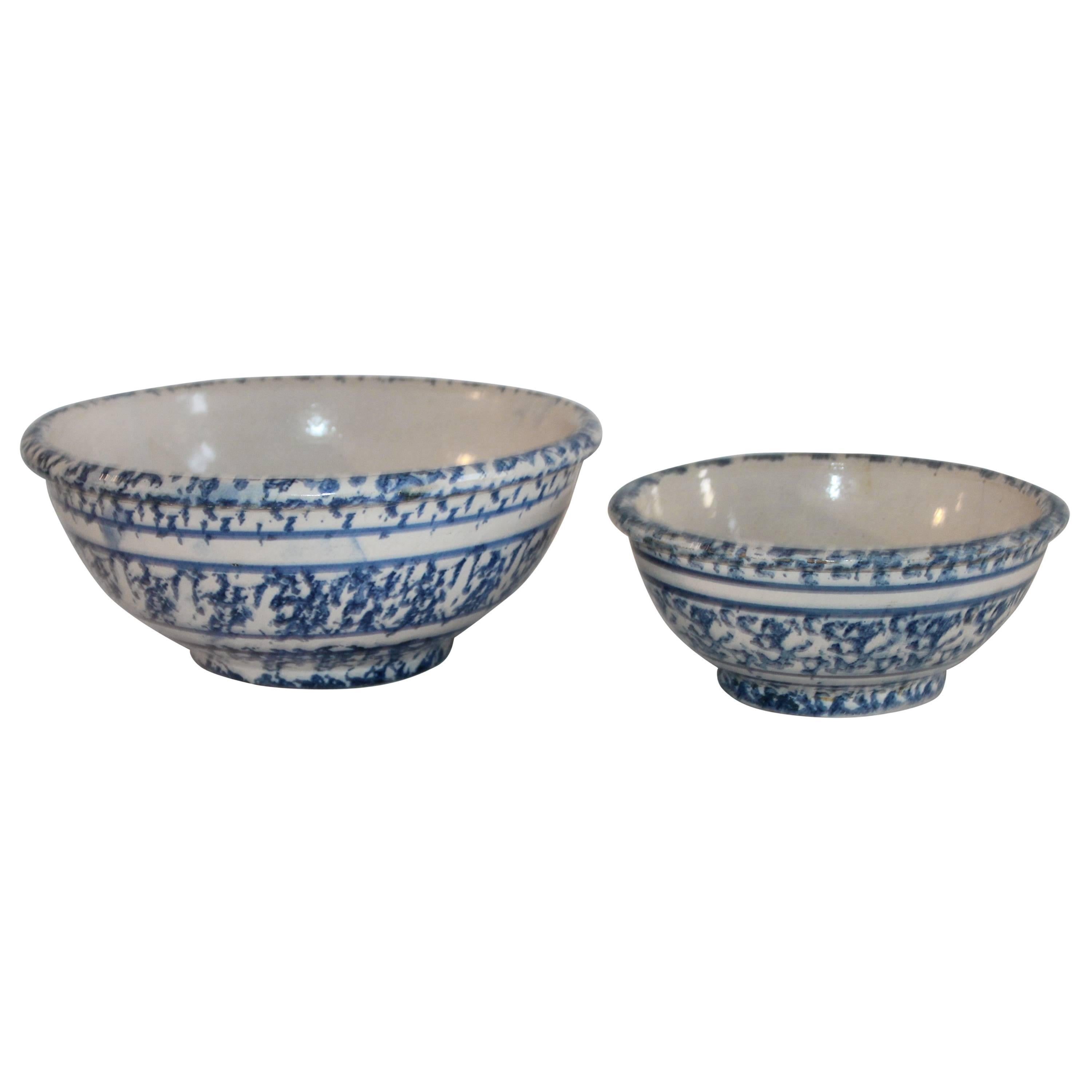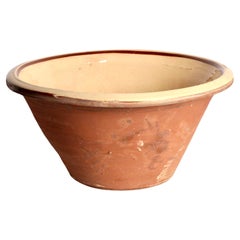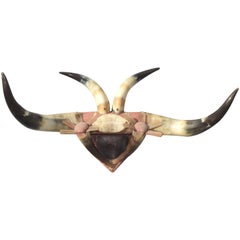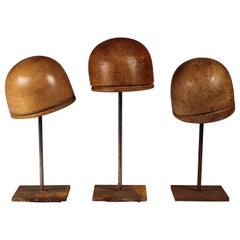
Set of Three 19th Century Italian Milliners Hat Blocks from Florence Italy
View Similar Items
Want more images or videos?
Request additional images or videos from the seller
1 of 16
Set of Three 19th Century Italian Milliners Hat Blocks from Florence Italy
About the Item
- Dimensions:Height: 14.57 in (37 cm)Width: 7.41 in (18.8 cm)Depth: 6.54 in (16.6 cm)
- Sold As:Set of 3
- Style:Folk Art (Of the Period)
- Materials and Techniques:
- Place of Origin:
- Period:
- Date of Manufacture:19th Century
- Condition:Wear consistent with age and use. Minor losses. Minor fading. Set of 3 hat blocks a) ht 37cm base 14cm sq Hat block 16.6cm depth x 18.8cm widths ht 14cm B) 42 cm ht x 14cm sq base Hat block depth16.2cm x width 19.5cm x ht 12.89cm C) 37cm ht x 14cm sq base Hat block 13.5 cm ht x depth 16.2cm x width 19 cm.
- Seller Location:London, GB
- Reference Number:1stDibs: LU2868316369762
About the Seller
5.0
Gold Seller
These expertly vetted sellers are highly rated and consistently exceed customer expectations.
Established in 2015
1stDibs seller since 2017
169 sales on 1stDibs
Typical response time: 1 hour
More From This SellerView All
- A large English 19th Century Dairy Bowl from The CotswoldsLocated in London, GBThis wonderful over sized 19th Century Dairy Bowl was found in the darkest depths of The historic Cotswolds in England. A Hand made Dairy Bowl that we procured from a traditional che...Category
Antique 1890s English Country Decorative Bowls
MaterialsTerracotta, Pottery
- Boho Chic 19th Century Decorative Water Spout Handle Jug from Provencal FranceLocated in London, GBA very rare antique French glazed terracotta water spout handle jug in original condition .These jugs were used primarily in the South of France. Chips and imperfections help authent...Category
Antique 19th Century French French Provincial Pottery
MaterialsClay
- 19th Century Dairy Jug in Terracotta twin handles from The Cotswolds EnglandLocated in London, GBThis wonderful over sized twin handled 19th Century Dairy Jug was found in the darkest depths of The historic Cotswolds in England. A Hand made Dairy Jug tha...Category
Antique 1890s English Country Garniture
MaterialsClay, Terracotta
- Pair of 19th Century Victorian Gothic Iron Fire Dogs or AndironsLocated in London, GBA very large and heavy set of Victorian Gothic revival Fire dogs or Andirons made from Iron. Possibly modelled on a much earlier pair. The Victorian Gothic movement or Victorian Revi...Category
Antique 1850s English Gothic Revival Andirons
MaterialsIron
- A pair of 19th Century carved Foo temple dogs or Chinese guardian LionsLocated in London, GBChinese guardian lions, or imperial guardian lions, are a traditional Chinese architectural ornament. Typically made of stone, they are also known as stone lions or shishi (石獅; shíshī). They are known in colloquial English as lion dogs or foo dogs / fu dogs. The concept, which originated and became popular in Chinese Buddhism, features a pair of highly stylized lions—often one male with a ball and one female with a cub—which were thought to protect the building from harmful spiritual influences and harmful people that might be a threat. Used in imperial Chinese palaces and tombs, the lions subsequently spread to other parts of Asia including Japan (see komainu), Korea, Philippines, Tibet, Thailand, Myanmar, Vietnam, Sri Lanka, Nepal, Cambodia, Laos, and Malaysia. There has been extensive interaction between Chinese mythology and Confucianism, Taoism, and Buddhism. Elements of pre-Han dynasty mythology such as those in Classic of Mountains and Seas were adapted into these belief systems as they developed (in the case of Taoism), or were assimilated into Chinese culture (in the case of Buddhism). Elements from the teachings and beliefs of these systems became incorporated into Chinese mythology. For example, the Taoist belief of a spiritual Paradise became incorporated into mythology as the place where immortals and deities used to dwell. Sometimes mythological and religious ideas have become widespread across China's many regions and diverse ethnic societies. In other cases, beliefs are more limited to certain social groups, for example, the veneration of white stones by the Qiang. One mythological theme that has a long history and many variations involves a shamanic world view, for example in the cases of Mongolian shamanism among the Mongols, Hmong shamanism among the Miao people, and the shamanic beliefs of the Qing dynasty from 1643 to 1912, derived from the Manchus. Politically, mythology was often used to legitimize the dynasties of China, with the founding house of a dynasty claiming a divine descent. Mythology and philosophy. Further information: Chinese philosophy True mythology is distinguished from philosophical treatises and theories. Elaborations on the Wu Xing are not really part of mythology, although belief in five elements could appear. The Hundred Schools of Thought is a phrase suggesting the diversity of philosophical thought that developed during the Warring States of China. Then, and subsequently, philosophical movements had a complicated relationship with mythology. However, as far as they influence or are influenced by mythology, divides the philosophical camps into two rough halves, a Liberal group and a Conservative group. The liberal group being associated with the idea of individuality and change, for example as seen in the mythology of divination in China, such as the mythology of the dragon horse that delivered the eight bagua diagrams to Fu Xi, and methods of individual empowerment as seen in the Yi Jing (Book of Changes). The Liberal tendency is towards individual freedom, Daoism, and Nature. The relationship of the Conservative philosophies to mythology is seen in the legendary Nine Tripod Cauldrons, mythology about the emperors and central bureaucratic governance, Confucianism, written histories, ceremonial observances, subordination of the individual to the social groups of family and state, and a fixation on stability and enduring institutions. The distinction between the Liberal and Conservative is very general, but important in Chinese thought. Contradictions can be found in the details, however these are often traditional, such as the embrace by Confucius of the philosophical aspects of the Yi Jing, and the back-and-forth about the Mandate of Heaven wherein one dynasty ends and another begins based according to accounts (some of heavily mythological) where the Way of Heaven results in change, but then a new ethical stable dynasty becomes established. Examples of this include the stories of Yi Yin, Tang of Shang and Jie of Xia or the similar fantastic stories around Duke of Zhou and King Zhou of Shang. Mythology exists in relationship with other aspects of society and culture, such as ritual. Various rituals are explained by mythology. For example, the ritual burning of mortuary banknotes (Hell Money), lighting fireworks, and so on. A good example of the relationship of Chinese mythology and ritual is the Yubu, also known as the Steps or Paces of Yu. During the course of his activities in controlling the Great Flood, Yu was supposed to have so fatigued himself that he lost all the hair from his legs and developed a serious limp. Daoist practitioners sometimes incorporate a curiously choreographed pedal locomotion into various rituals. Mythology and practice, one explains the other: in these rituals, the sacred time of Yu merges with the sacral practice of the present. Various ideas about the nature of the earth, the universe, and their relationship to each other have historically existed as either a background or a focus of mythologies. One typical view is of a square earth separated from a round sky by sky pillars (mountains, trees, or undefined). Above the sky is the realm of Heaven, often viewed of as a vast area, with many inhabitants. Often the heavenly inhabitants are thought to be of an "as above so below" nature, their lives and social arrangements being parallel to those on earth, with a hierarchical government run by a supreme emperor, many palaces and lesser dwellings, a vast bureaucracy of many functions, clerks, guards, and servants. Below was a vast under ground land, also known as Diyu, Yellow Springs, Hell, and other terms. As time progressed, the idea of an underground land in which the souls of the departed were punished for their misdeeds during life became explicit, related to developments in Daoism and Buddhism. The underground world also came to be conceived of as inhabited by a vast bureaucracy, with kings, judges, torturers, conductors of souls, minor bureaucrats, recording secretaries, similar to the structure of society in the Middle Kingdom (earthly China). Chinese temple Dogs...Category
Antique 1860s Chinese Chinese Export Sculptures and Carvings
MaterialsHardwood
- 19th Century Victorian Gothic Fire Dogs or Andirons in the Shape of GriffinsLocated in London, GBA mid 19th century pair of zoomorphic Griffin Fire Dogs or Andirons. Made from cast Iron and with copper stomach inserts, these unusual and rare pieces are indicative of the Victoria...Category
Antique 1860s English Gothic Revival Andirons
MaterialsIron, Copper
You May Also Like
- Belgian Pine Childs Hat Block, Milliners FormLocated in Chillerton, Isle of WightBelgian pine childs hat block, Milliners form This is the form of a Bowler Hat with a narrow brim it is a superbly attractive piece The Block comes from Belgium and is in excelle...Category
Antique Late 19th Century Folk Art More Folk Art
MaterialsPine
- Nest of Three 19th Century Signed Nantucket Lightship BasketsBy Rowland FolgerLocated in Nantucket, MANest of three Nantucket lightship baskets, the swing handles, staves and the ears ( which attach the handle to the basket) are all carved from oak. The bottoms are made from pine and each are stenciled with the maker's mark, "R Folger Maker Nantucket Mass." Rowland Folger (1803-1883) is considered one of Nantucket's first makers of lightship baskets. His baskets are very durable and were definitely used as utilitarian.These three baskets were discovered in an attic, where they were living for the last 90 years...Category
Antique Mid-19th Century American Folk Art Nautical Objects
MaterialsBrass
- 19th Century Steer Horn Ladies Hat Pin Cushion or Mens Hat RackLocated in Soquel, CA19th Century Steer Horn Ladies Hat Pin Cushion or Mens Hat Rack Antique late 19th century steer horn hat rack with "petal" pin cushions for hat pins and h...Category
Antique 1890s American Folk Art More Folk Art
MaterialsWool, Horn
$920 Sale Price20% Off - Fruit Wooden Painted Italian 19th Century Folk Vernacular Set of 15 PiecesLocated in BUNGAY, SUFFOLKA rare set of 15 pieces of 19th century Italian painted wooden fruit, all life size.Category
Antique 1860s European Folk Art More Folk Art
MaterialsWood
- Collection of Three 19th Century Butter BowlsLocated in Los Angeles, CAThese fine and early butter bowls are in fine condition and have a nice worn patina. Sold as a group of three.Category
Antique Late 19th Century American Adirondack Decorative Bowls
MaterialsWood
$1,196 Sale Price20% Off - Extraordinary Early 19th Century Small Anthropomorphic BlockLocated in Pease pottage, West SussexImpressive, small early 19th Century anthropomorphic cutting block believed to be a lacemakers station highly unusual rare carved head as the main body o...Category
Antique Early 19th Century French Side Tables
MaterialsWood
Recently Viewed
View AllMore Ways To Browse
Hat Makers
Milliner Hat
Antique Hat Molds
Antique Hat Mold
Antique Hat Blocks
Antique Hat Block
Wood Hat Molds
Wood Hat Block
Antique Wood Hat Mold
Milliners Hat Block
Hat Block Mold
Vintage Embroidery Folk Art
Samplers From United States
Antique American Samplers
Erzgebirge Used
Antique Weeder
Folk Art Lemons
Folk Art Spool
